Based in the Laguna del Tigre area of Peten, Las Guacamayas Biological station is being reactivated by Asociacion Balam. The main goals of the station is to provide a protection status to the protected area and to promote the area as a destination both for touristic economic potential and scientific research on tropical flora, fauna, and ecology. The Biological Station is named after their flagship species Ara macao, which is endemic to Guatemala.
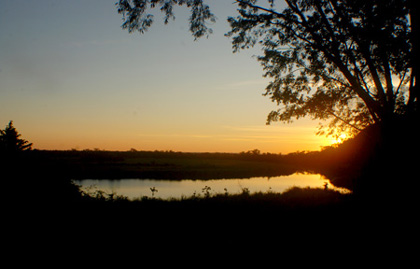 |
|
Laguna del Tigre area of Peten, Las Guacamayas Biological Station. Peten, Guatemala.
|
The station offers properly equipped facilities to accommodate up to 30 people with electricity during the evening, solar power, boats, hiking trails, bird observation towers, four wheel drive vehicles, etc. The camp is well designed and outfitted by Jeovany.
The station is located along the shore of the Rio San Pedro Martyr, which is one of the tropical wetlands of the region. Although the designation "Laguna del Tigre" is used to denote the location, the camp is actually nowhere physically adjacent to this or any of the other beautiful lakes in the area. The Las Guacamayas station is about halfway between Paso Caballos and the protected area of El Peru, where arqueological research is being conducted. The IDAEH entrance to the area of the ruins is about 4km from the station. We visited the camp area but did not visit the actual ruins of El Peru, as our visit was not an archaeological project at all. Our interest was in assisting the biologists on how to do QTVR object movies of biological specimens, how to do panoramic photographs, etc.
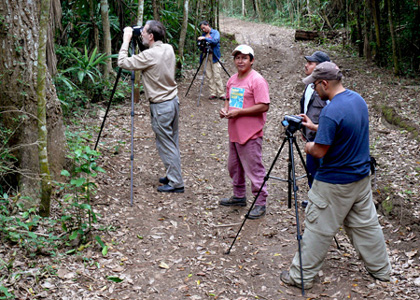 |
|
In this photo Dr. Nicholas Hellmuth, Camila Morales and Eduardo Sacayon photographing a Lagarto tree. Photo by Lemuel Valle, Laguna del Tigre, Peten.
|
The park is part of the Mayan Biosfere Reserve. Lemuel Valle is the local Biologist who is working on several different projects to promote the area.
Laguna del Tigre National Park is one of the most important wetlands protected by the RAMSAR convention in Guatemala. 48,000 of hectareas and more than 3000 species of flora make up one fo the most biodiverse ecosistems of the region.
 |
|
The station is located along the shore of the Rio San Pedro Martyr. Laguna del Tigre area of Peten, Las Guacamayas Biological Station.
|
The physical camp:
Las Guacamayas Biological station is pleasant. Indeed I spent the Christmas holidays doing photography for biological projects to provide photographs for their project. It was a great place to escape the world and spend a Christmas in the jungles.
Two troops of howler monkeys roared into action several times a day and night. One time a third group activated their impressive noise system. Then there were also spider monkeys. And all of this was directly physically adjacent to the camp: you did not have to leave the camp to experience the monkeys.
FLAAR will be issuing a photo essay on the camp, complete with panoramic photographs by student Camila Morales who was working at the camp with FLAAR over Christmas.
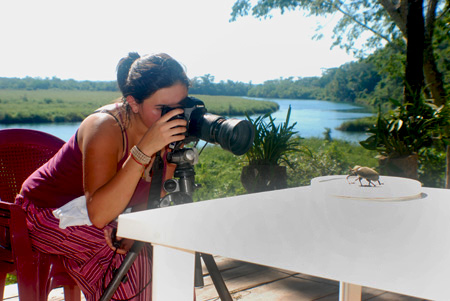 |
|
Here Camila Morales (anthropology/archaeology student volunteer with FLAAR). photographing some animals like beetle, bees, bufo marino, murcielago and plants.
|
 |
|
Results of the Scarabaeus photography.
|
Plants and animals to expect
You have both riverine, swamp, lake, and forest environments. In the village area of Paso Caballos you also have the results of slash-and-burn milpa agriculture.
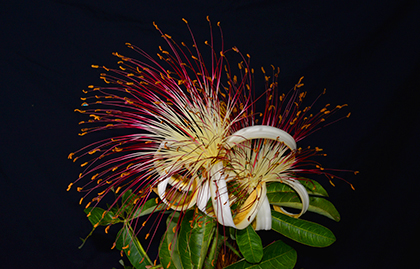 |
|
Photograph of a Pachira Aquatica taken at Las Guacamayas Biological Station.
|
 |
|
Photograph of Piper taken at Las Guacamayas Biological Station.
|
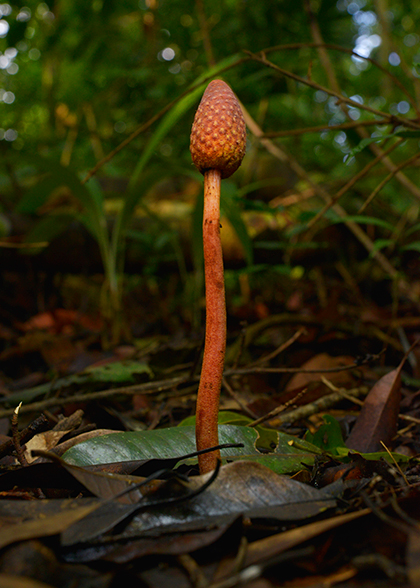 |
|
Photograph of a Mushroom taken at Las Guacamayas Biological Station.
|
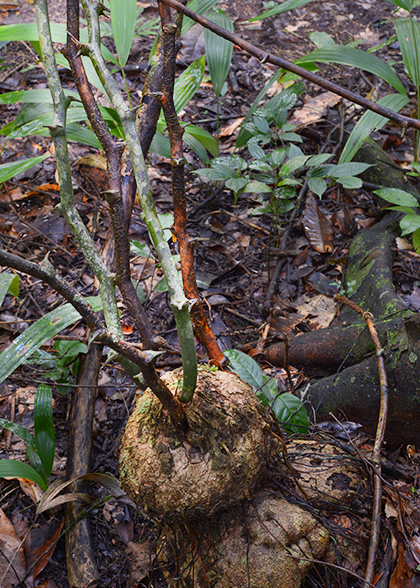 |
|
Photograph of a Smilax taken at Las Guacamayas Biological Station.
|
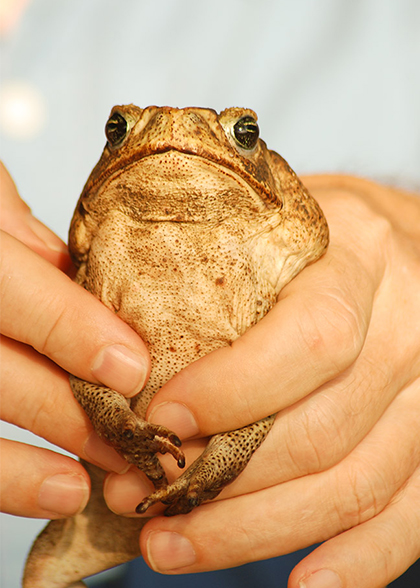 |
|
Photograph of a Bufo Marino taken at Las Guacamayas Biological Station.
|
Hummingbird
This hummingbird made the error to fly inside the camp dining room. Since hummingbirds can fly straight forward, and up, they do okay outside. But inside a house, if you fly up, you keep banging your head into the ceiling. Evidently they do not fly downwards very well; they have to let themselves simply drop down. But it kept crashing and freaked out before it got low enough to fly out the window or door (which we kept open to help it get out).
The ceiling was too high for us to help the hummingbird escape. After an hour of hitting his head against the thatch roof, it crashed down to an inside roof section. When we did not hear it flying any more, we got a ladder to see if we could help it get outside, but it had seemingly died or exhaustion or a heart attack from its final crash. So we photographed it, including a QTVR object movie by Camila Morales.
 |
|
Hummingbirds are important in Mayan lore, myths, iconography. Here is a Amazilia tzacatl species of hummingbird that we did a QTVR photography of at Las Guacamayas biological sation, El Peten, Guatemala
|
Hummingbirds are frequently shown in Maya art, so it is nice to have an opportunity for close-up photography of this splendid creature of Mother Nature.
The camp is a good place for your university to have student groups
If you are a professor anywhere in the world, and seek an area filled with interesting plants and animals for your faculty and students to study, you should consider this research facility.
If you are an individual and wish to volunteer for research on tropical flora and fauna, you might also like to contact this camp as a place to learn about Central American plants and animals.
Several of the staff also speak English though you should be able to learn Spanish while in Guatemala. If you wish to learn a Mayan language, there are several hundred Kekchi Mayan speakers nearby.
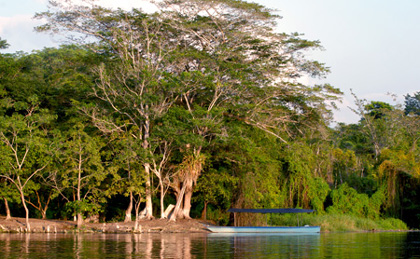 |
|
Laguna del Tigre area of Peten, Las Guacamayas Biological Station is a good place for any people or students interested in plants or animals.
|
 |
|
Here is Dr. Nicholas Hellmuth (in the middle) at the Laguna del Tigre area of Peten, Las Guacamayas Biological Station. Laguna del Tigre National Park is one of the most important wetlands protected by the RAMSAR convention in Guatemala.
|
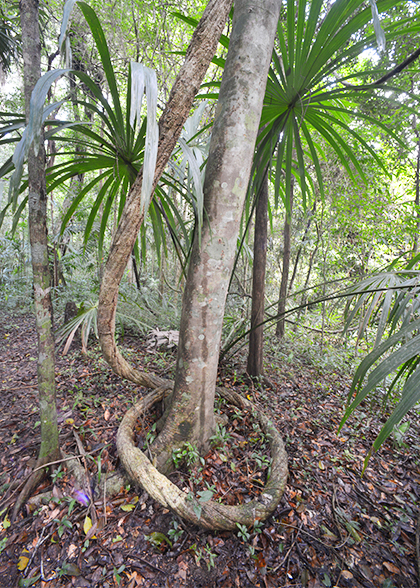 |
|
Photograph of a thick vine taken at Las Guacamayas Biological Station.
|
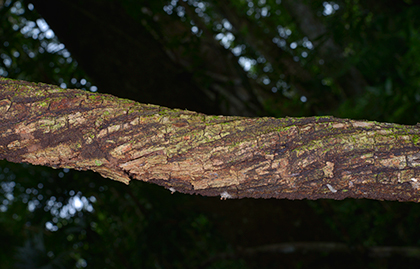 |
|
Photograph of a thick vine taken at Las Guacamayas Biological Station.
|
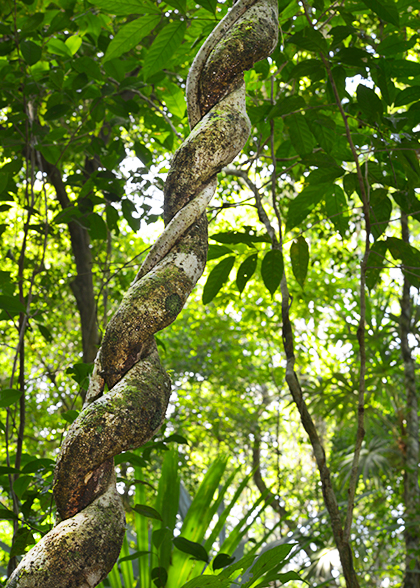 |
|
Photograph of a thick and twirl vine taken at Las Guacamayas Biological Station.
|
Contact information for Las Guacamayas
administracion@lasGuacamayas.org
Telephone: (502) 5699 - 3669 and 5699-3735
If dialing from USA, dial 011 502 5699 - 3669 or 5699-3735
502 is both country code and city code all together.
You can also read about
Last updated Oct 14, 2014
Updated June 4, 2010. First posted January 21, 2010.































